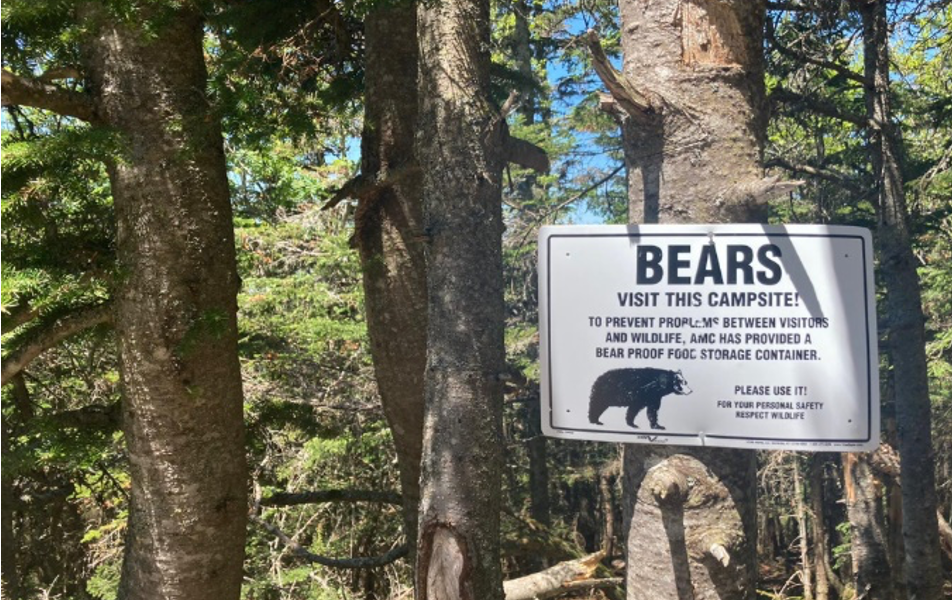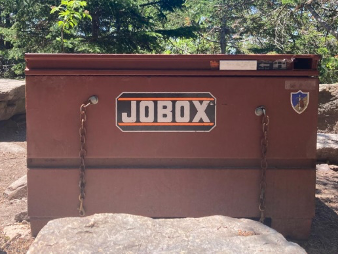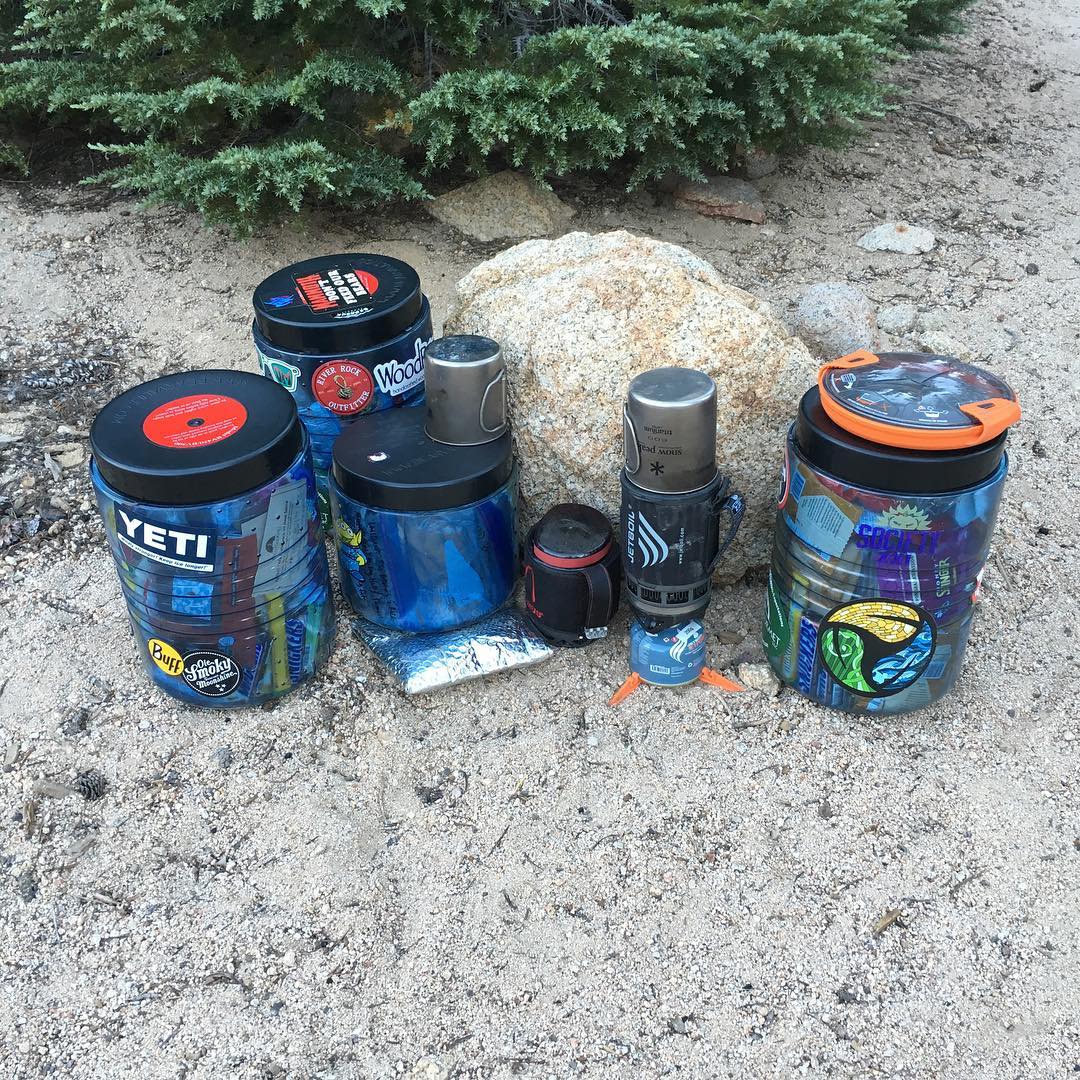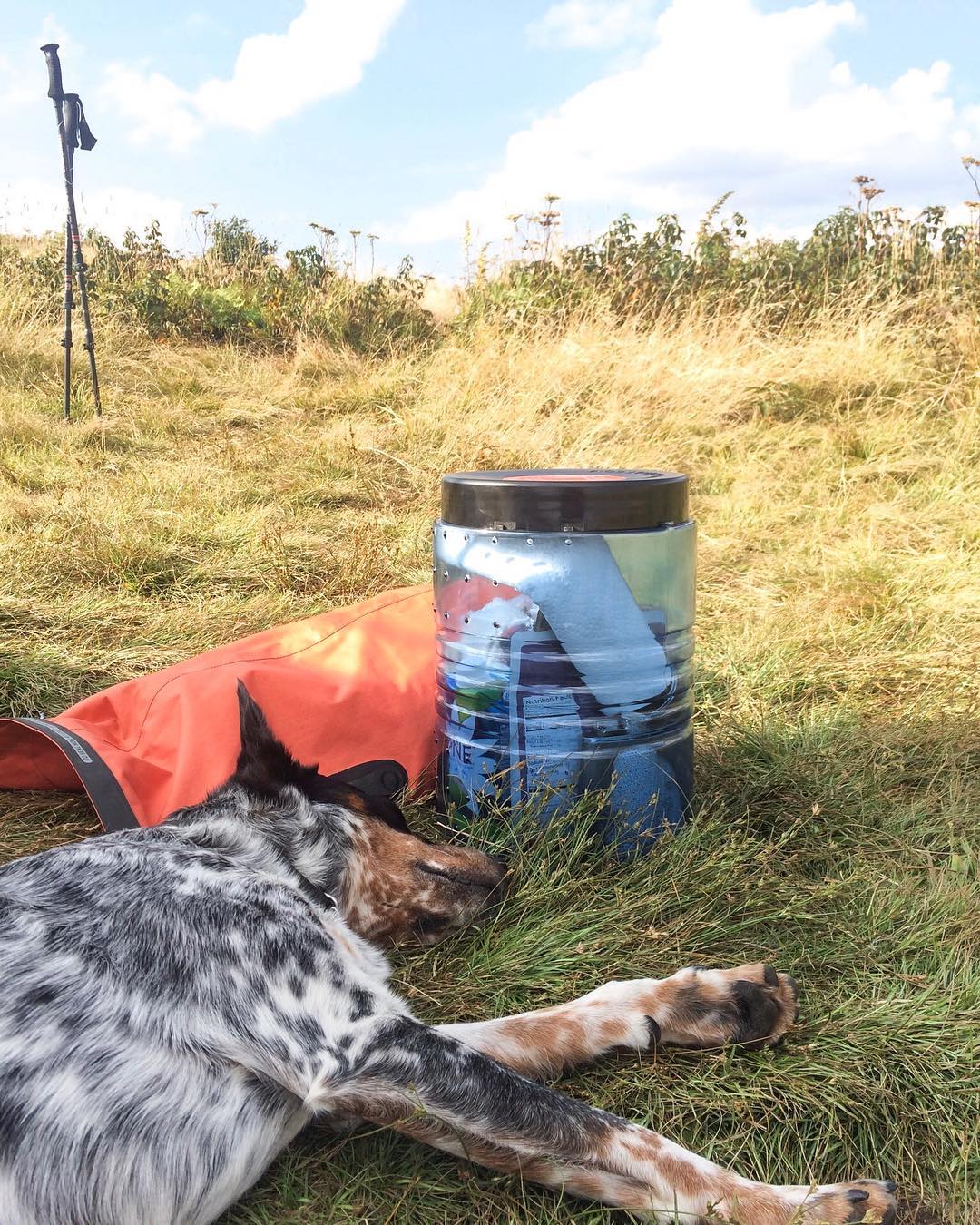Why You Should Bring a Bear Canister on Your Next Backpacking Trip

AMC’s Shelters Department loves that so many people want to experience the wilderness, recreate outdoors, and embrace travel by foot. Last year, we recorded more than 18,000 campers who visited one of nine staffed AMC campsites in the White Mountain National Forest over a five-month period alone. However, we can’t ignore the negative effects of elevated use. The capacity for food storage at our backcountry shelters and the quantity of people who aren’t able to store their food safely has become an issue.
Each staffed AMC site has at least one bear box for campers’ food storage – and our busiest sites have two. These provide campers with a viable food storage option – but given increased site use in recent years – the boxes simply haven’t been enough.

Imagine it: the site is full, and you arrived late. The bear boxes are over-flowing. Tight tree stands characteristic of White Mountain campsites and shelters make it nearly impossible to throw an adequate bear hang. You didn’t bring your paracord any way…
What options are left? Beg your fellow campers to eat more food and make some space? Play bear box Tetris for hours to no avail? Sleep with your food and risk mice chewing through your backpacking tent?…
It’s hard to believe this happens on a regular basis, but I’ve lived it too many times at Garfield Ridge, Liberty Springs, and Guyot in particular.
You may be thinking, “So what? The boxes are full. I’ll sleep with my food. I’ve slept with my food before and it’s never caused an issue.” Well, here’s why you shouldn’t: Habituating an animal takes ONE incident. It takes one forgotten Clif Bar, a few pieces of GORP on the ground, or “‘risking it’ just for the night.
You could justify your decision by saying, “Oh, bears don’t normally climb to this altitude” or “the campsite is too noisy for anything to happen,” but once wildlife gets a taste of human food, they learn to come back for more.
In re: to black bears, getting a hold of food is like giving a dog a treat. That one forgotten Clif Bar or inadequately hung bear bag teaches and reinforces the bear’s behavior. Habituated bears pose a danger to hikers and risk eventual euthanasia.
They may not normally be present at higher altitudes or noisy campsites, but we’ve seen both these scenarios happen before, which means we’ll likely see it again. If just one person, one night, at one campsite can cause this large of a reaction – why risk it?
It’s not just bears, habituated mice become pests that will chew through just about anything. I’ve seen habituated crows and grey jays peck through hikers’ packs on Franconia Ridge. I’ve been victim to a brave grey squirrel who stole my contact case, then my chap stick, surely because I had stored my toiletries in my food bag.
If you don’t store your food, or if you store your food carelessly, wildlife will come. And they will keep coming back.
So, what can we do? As use continues to rise, AMC’s Backcountry Campsite Program is striving to work with the hiking community to minimize impact on the forest we all know and love.
About 30% of our campsite use is attributed to visitors traveling in organized groups: scouts, camps, colleges, family outings, educational groups, and more. We’re calling on these groups – those who are outdoor leaders, those who educate and inspire, and those who set an example to do the right thing. Beginning this year, we are asking groups of 6 or more people to bring their own bear canisters for food storage rather than relying on the communal campsite bear box.

We understand that bear canisters can be bulky and add weight to your pack. I, too, strongly opposed them for many of my early backpacking years. But then I gave the canister a try and learned that they have some serious perks. In addition to food storage becoming simple and worry-free, all of a sudden, my pack had a nice rigid and waterproof internal structure that kept me accountable from over-packing food. Not to mention, I always had a camp chair and a new piece of gear to spark small talk.

A bear canister can be purchased from most outdoors stores for between $60 and $80. We recommend the BV500. Bear canisters can also be borrowed from White Mountain National Forest ranger stations if contacted in advance. Additionally, AMC’s Shelters department is working to propose a bear canister rental system for future use. We don’t make this recommendation lightly as we know it will affect your group’s experience, but we hope carrying a canister can help appease food storage issues at these beloved backcountry sites and normalize responsible food storage.
So, consider the canister on your upcoming backpacking trip! We’d love to support you however we can, so don’t hesitate to reach out with any questions, concerns, or suggestions! We appreciate you!




